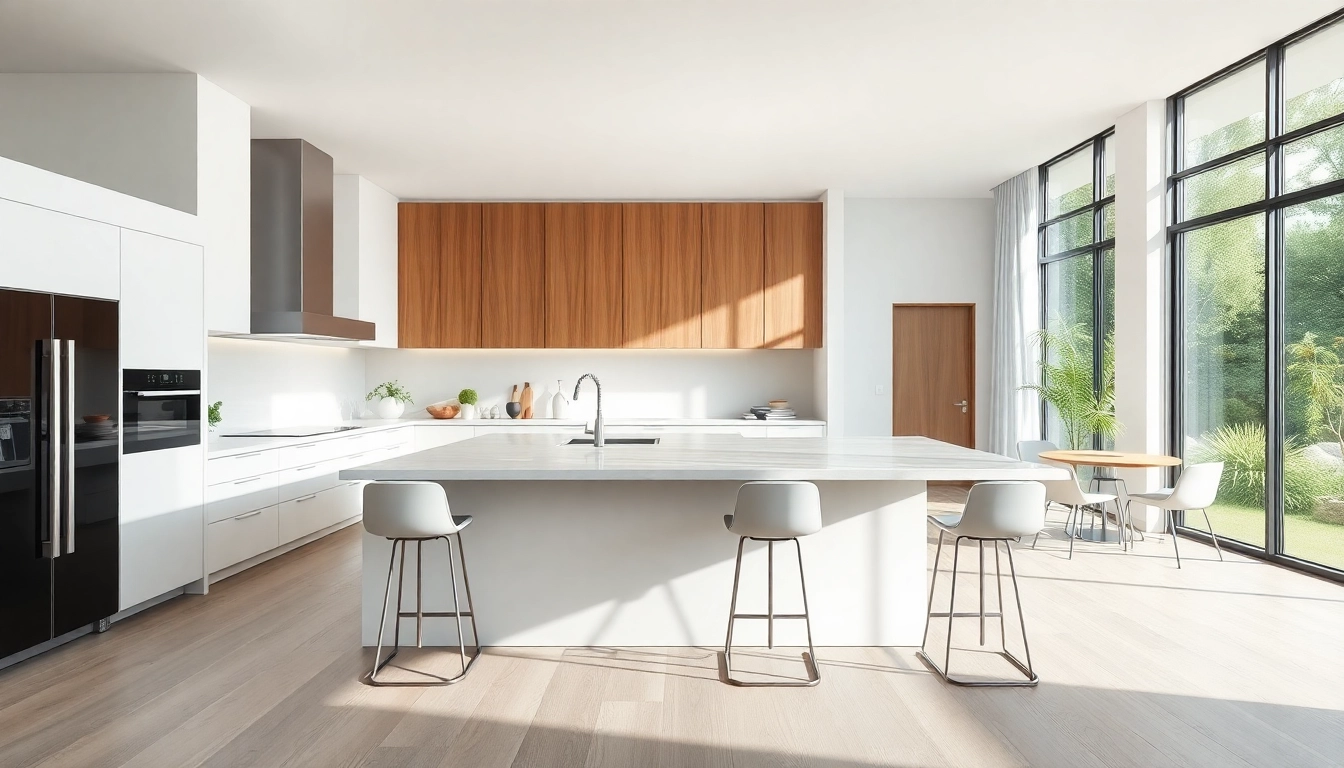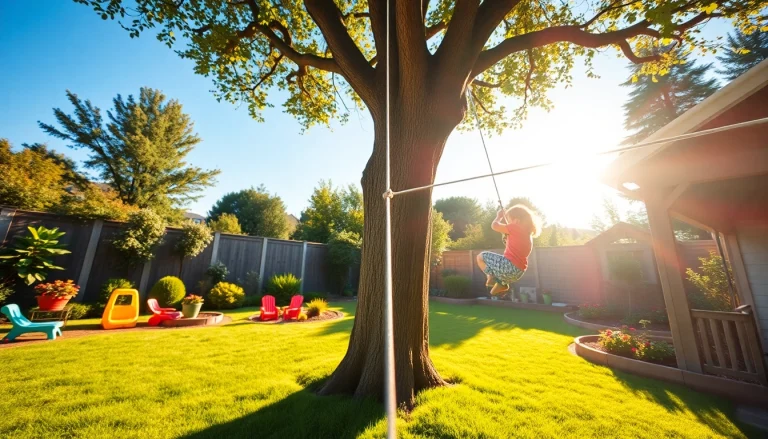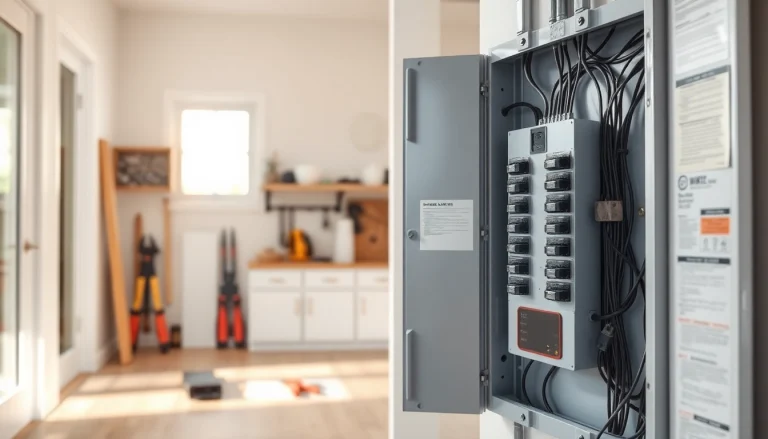Understanding the Latest Kitchen Remodels Trends
The kitchen is often hailed as the heart of the home, and with evolving tastes and innovative designs emerging each year, it’s no surprise that homeowners are increasingly seeking the latest kitchen remodels. Whether you’re planning to undertake a small update or a full renovation, understanding current trends can provide valuable inspiration and guidance for your project.
Key Elements in Modern Kitchen Design
Modern kitchens are defined by their functionality and aesthetic appeal. The standout elements that characterize contemporary kitchen designs include:
- Open Layouts: A significant trend is the preference for open spaces that allow for seamless interaction between the kitchen and other living areas. This approach not only enhances the flow of natural light but also fosters family engagement.
- Functional Islands: Kitchen islands are no longer just a place to prep food; they serve multiple purposes, including cooking surfaces, dining areas, and additional storage. These multifunctional spaces are a hallmark of modern design.
- Sleek Lines and Minimalism: Clean lines and a minimalist approach help create a sense of order and calm. Many modern kitchens opt for handle-less cabinetry and built-in appliances for a sleek, integrated look.
- Mixed Materials: Combining different materials like wood, metal, and glass adds texture and depth to the design, ensuring the kitchen feels both dynamic and inviting.
Top Color Palettes for 2025
Color choices play a crucial role in setting the mood and style of a kitchen. In 2025, trending color palettes are likely to feature:
- Warm Neutrals: Shades of beige, taupe, and cream are ideal for creating a cozy atmosphere while still appearing sophisticated.
- Bold Accents: Deep greens, navy blues, and charcoal blacks are making waves as accent colors, used strategically to add contrast to lighter elements.
- Soft Pastels: Muted shades like powder blue and sage green are popular for a fresh and airy look, especially in combination with natural wood finishes.
- Matte Finishes: A shift toward matte over glossy surfaces is emerging, providing a more understated elegance that appeals to many homeowners.
Popular Materials and Finishes
The materials selected for countertops, cabinets, and flooring have a profound impact on the kitchen’s overall style and functionality. Some of the most sought-after materials in 2025 include:
- Quartz and Engineered Stone: Durable and low-maintenance, quartz continues to be a preferred choice for countertops, offering a high-end look without the upkeep of natural stone.
- Reclaimed Wood: Popular for its unique character and sustainability, reclaimed wood is being used in cabinetry and accents, providing warmth and a rustic touch.
- Glass Backsplashes: Reflective glass backsplashes not only brighten the space but also add a contemporary flair, making them an attractive choice for modern kitchen designs.
- Stainless Steel: Always in style, stainless steel surfaces are favored for their durability and clean look, making them ideal for appliances, sinks, and fixtures.
Budgeting for Your Kitchen Remodel
Remodeling your kitchen can be a significant investment. Understanding the costs and how to budget effectively is crucial to help you achieve your desired look within your financial limits.
What Does a Kitchen Remodel Cost?
The average cost of a kitchen remodel can vary widely based on scope, location, and material choices. According to home improvement experts, the typical kitchen remodel can range from $15,000 to over $50,000. Here’s a breakdown of potential costs associated with a kitchen remodel:
- Cabinetry: 25-35% of your budget could go towards cabinetry, depending on whether you opt for stock, semi-custom, or custom options.
- Countertops: This can cost anywhere from $3,000 to $5,000 based on materials like granite, quartz, or laminate.
- Labor Costs: On average, labor can account for 20-35% of the overall budget, heavily influenced by your geographic location and contractor rates.
- Appliances: Expect to allocate about 10-15% of your budget for mid-range appliances, with luxury brands costing significantly more.
Saving Tips for Homeowners
Budgeting for a kitchen remodel doesn’t mean you have to compromise on quality or style. Here are some tips to save on your remodel:
- Be Strategic with Layout Changes: Keeping the existing layout can save on expensive plumbing and electrical work. Minor tweaks can often achieve the desired results.
- Shop Sales: Timing your purchase around major holidays like Black Friday or Labor Day can lead to significant savings on appliances and materials.
- Do Some Work Yourself: Taking on tasks such as painting or demolition can help reduce labor costs and give you a sense of pride in your remodel.
- Consider Refacing Cabinets: Instead of a complete replacement, refacing your cabinets for a new look can be a cost-effective alternative.
Financing Options for Your Remodel
There are various financing options available to help manage the financial aspects of your kitchen renovation:
- Home Equity Loans: These loans allow you to borrow against the equity in your home to finance the remodel.
- Personal Loans: Unsecured personal loans can provide quick funding without needing to leverage your home.
- Credit Cards: For smaller remodels, using a credit card with a promotional interest rate can be an option, but be cautious of accruing high-interest debt.
- Government Grants and Assistance Programs: Depending on where you live, you may have access to grants for energy-efficient updates.
Prioritizing Functionality and Aesthetics
In any kitchen remodel, balancing the aesthetic appeal with functional design is pivotal. A well-designed kitchen should look great while also being practical for daily use.
Layouts that Enhance Workflow
A functional kitchen layout is essential for an efficient cooking experience. The most popular layouts include:
- U-Shaped Kitchen: Utilizing three walls of cabinets, the U-shaped layout offers ample countertop space and storage while creating an efficient work triangle between the sink, stove, and refrigerator.
- L-Shaped Kitchen: This layout is versatile and ideal for open-plan spaces, offering a combination of functionality and style.
Galley Kitchen: A narrow design that maximizes space, perfect for smaller homes while ensuring everything is within reach. - Island Kitchen: Featuring a central island, this layout promotes collaboration and can serve multiple purposes, including storage and seating.
Incorporating Smart Storage Solutions
Maximizing storage can help keep your kitchen organized and efficient. Consider these smart storage solutions:
- Pull-Out Cabinets: Deep drawers that pull out make accessing pots and pans easier, eliminating the need to dig through cluttered spaces.
- Vertical Storage: Use wall-mounted racks and shelves to take advantage of vertical space for storing spices, herbs, or cookbooks.
- Corner Cabinets: Lazy Susans or pull-out carousel systems can make corner cabinets more useful and accessible.
- Integrated Appliances: Built-in refrigerators and dishwashers help streamline the look and maintain an uncluttered kitchen design.
Balancing Style with Practicality
When it comes to decor, you may want to choose design elements that look good but also stand the test of time:
- Durable Surfaces: Invest in materials that are resistant to stains and scratches, such as quartz or high-quality tile, to prolong the life of your kitchen.
- Timeless Design: Black and white palettes, classic woods, and simple patterns tend to outlive trends, ensuring your kitchen remains stylish over time.
- Easy-to-Clean Finishes: Glossy finishes are not only stylish but also make cleaning and maintenance easier.
Innovative Features to Consider
Modern kitchen remodels often include innovative features that enhance both functionality and design. Here are key elements to think about:
Sustainable and Eco-Friendly Choices
Integrating sustainable design principles can lower the environmental impact of your kitchen remodel:
- Energy Star Appliances: Opt for energy-efficient appliances that use less energy and water, reducing your utility bills.
- Recycled Materials: Consider countertops made from recycled glass or composite materials that significantly reduce waste.
- Low-VOC Paints: Use paints and finishes with low volatile organic compounds (VOCs) to improve indoor air quality.
- Smart Thermostats and Energy Management Systems: Ensure efficiency by installing smart technology that automatically controls the kitchen’s energy usage.
High-Tech Appliances to Elevate Your Kitchen
High-tech appliances are no longer a luxury but a standard part of modern kitchen design:
- Smart Refrigerators: Many models now feature wifi capabilities, allowing you to manage inventory and get reminders when items are running low.
- Induction Cooktops: These cooktops provide faster cooking times and are energy-efficient, heating pans directly without wasting heat.
- Dishwashers with Load Sensors: Modern dishwashers can optimize water use based on the load, making them environmentally friendly.
- Integrated Coffee Machines: Built-in coffee makers offer convenience for coffee lovers, blending seamlessly into cabinetry.
Unique Lighting Design Ideas
Lighting is pivotal in defining a kitchen’s ambiance. Consider these unique lighting solutions:
- Layered Lighting: Combining ambient, task, and accent lighting creates a versatile environment suitable for cooking and entertaining.
- Statement Pendants: Stylish pendant lights over the kitchen island add personality and serve as focal points in the design.
- Under-Cabinet Lighting: LED strips can illuminate countertops and create a chic atmosphere while enhancing functionality.
- Dimmers: Installing dimmers allows you to adjust lighting based on the time of day and activity.
Real-Life Latest Kitchen Remodels: Case Studies
Learning from successful kitchen remodels can inspire your project. Here’s a look at real-life transformations that beautifully illustrate the latest trends:
Transformative Success Stories
1. The Minimalist Marvel: A homeowner in Atlanta transformed their outdated kitchen into a modern marvel with clean lines, a neutral color palette, and innovative storage solutions. The final result features a large island with sleek cabinetry and unique pendant lights that serve as statement pieces. The remodel not only improved functionality but also greatly increased the home’s value.
2. The Eco-Friendly Retreat: In San Francisco, a couple opted for sustainable materials when remodeling their kitchen. They installed a bamboo countertop, energy-efficient appliances, and reclaimed wood cabinets. Their eco-conscious choices not only minimized their carbon footprint but also created a stylish, warm space.
Inspiring Before and After Comparisons
Visual storytelling is particularly striking in kitchen remodels. Consider the following before-and-after comparisons:
- Before: A cramped, outdated kitchen featuring heavy cabinetry and dark finishes.
- After: An airy, open-layout kitchen with bright cabinetry, an island, and expansive windows inviting natural light.
These visual transformations demonstrate the power of thoughtful design and highlight essential elements like color, light, and layout.
Expert Tips from Designers
Consulting with professional designers can yield invaluable insights for your remodeling project. Here are some tips derived from industry experts:
- Plan Ahead: Anticipate your needs over the coming years when designing your kitchen—think about potential family growth or changes in your lifestyle.
- Maintain Cohesion: Ensure your new kitchen flows well with adjacent spaces, maintaining a consistent style and color scheme.
- Invest Wisely: Prioritize areas that will see the most use, such as countertops and appliances, over less visible details.








